We are the travellers - II NCERT Solutions | Mathematics (Maths Mela) Class 5 - New NCERT PDF Download
Page 42
Q. In each of the following, there are two groups of numbers. Look carefully at the numbers in each group and their sums. Interchange pairs of numbers between the two groups to make their sums equal. Try to do this using the least number of moves. You could write each number on a small piece of paper.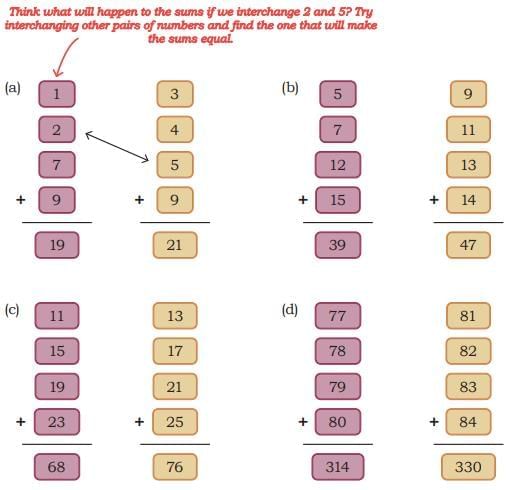
Ans: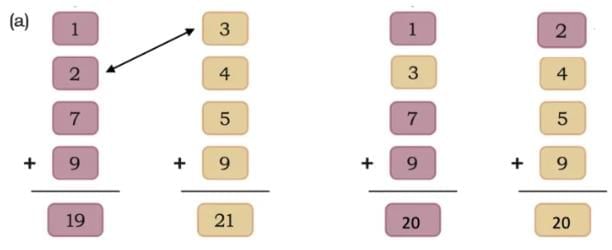
Swap (2 ↔ 3) → both sums become 20. (1 move)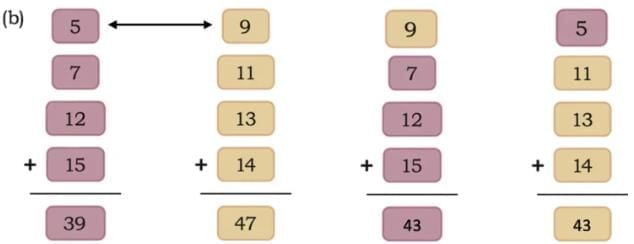
Swap (5 ↔ 9) → both sums become 43. (1 move)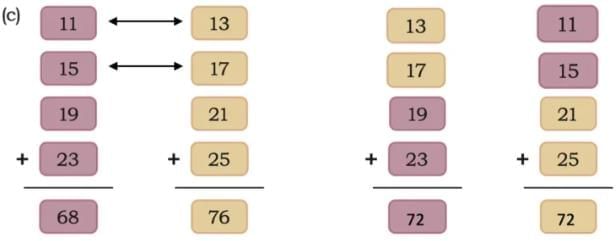
Swap (11 ↔ 13) and (15 ↔ 17) → both sums become 72. (2 moves)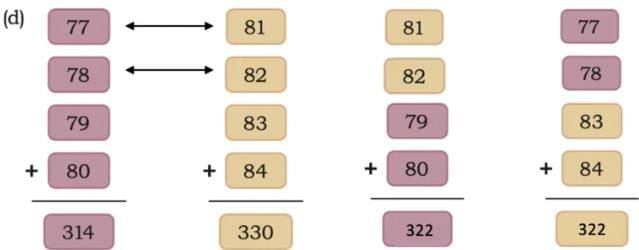
Swap (77 ↔ 81) and (78 ↔ 82) → both sums become 322. (2 moves)
Page 43
Fuel Arithmetic
Q1. A lorry has 28 litres of fuel in its tank. An additional 75 litres is filled. What is the total quantity of fuel in the lorry? The total quantity of fuel in the tank is 28 L + 75 L. Let us try one more.
Let us try one more.
Q2. Find the sum of 49 and 89.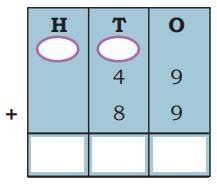 Ans:
Ans: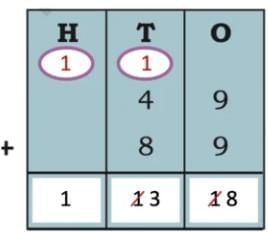
Let Us Solve
Q. Add the following numbers. Wherever possible, find easier ways to add the pairs of numbers.
1. 15 + 79
2. 46 + 99
3. 38 + 35
4. 5 + 89
5. 76 + 28
6. 69 + 20
Ans:
1. 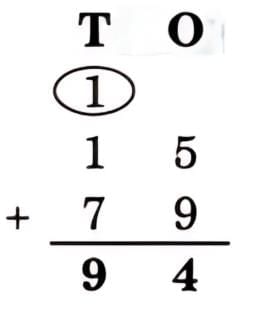 2.
2. 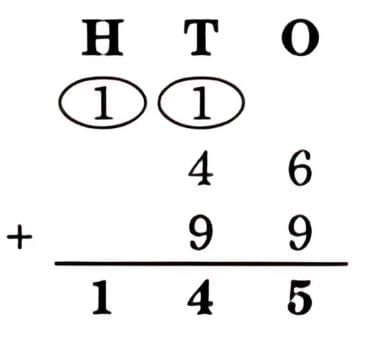 3.
3. 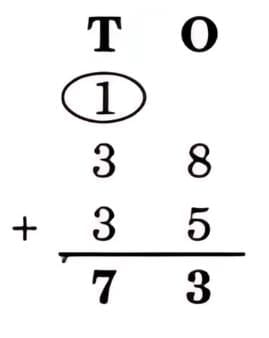 4.
4. 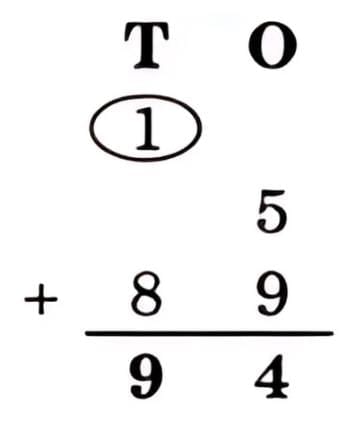 5.
5. 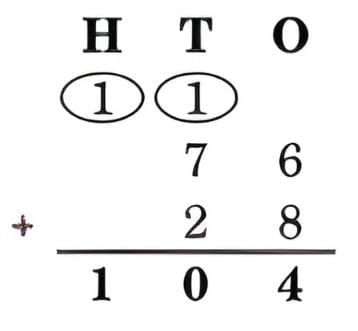 6.
6. 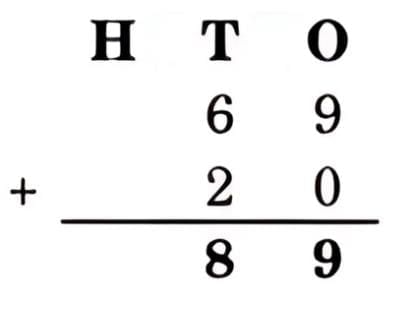
Page 44
Relationship Between Addition and Subtraction
Q1. Find the relationship between the numbers in the given statements and fill in the blanks appropriately.
(a) If 46 + 21 = 67, then,
67 – 21 = _______.
67 – 46 = _______.
(b) If 198 – 98 = 100, then,
100 + _______ = 198.
198 – _______ = 98.
(c) If 189 + 98 = 287, then,
287 – 98 = _______.
287 – 189 = _______.
(d) If 872 – 672 = 200, then,
200 + _______ = 872.
872 – _______ = 672.
Ans:
(a) If 46 + 21 = 67, then,
67 – 21 = 46.
67 – 46 = 21.
(b) If 198 – 98 = 100, then,
100 + 98 = 198.
198 – 100 = 98.
(c) If 189 + 98 = 287, then,
287 – 98 = 189.
287 – 189 = 98.
(d) If 872 – 672 = 200, then,
200 + 672 = 872.
872 – 200 = 672.
Q2. In each of the following, write the subtraction and addition sentences that follow from the given sentence.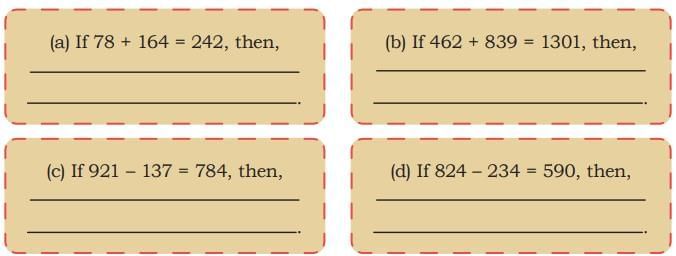
Ans:
(a) If 78 + 164 = 242, then
242 − 164 = 78
242 − 78 = 164
(b) If 462 + 839 = 1301, then
1301 − 839 = 462
1301 − 462 = 839
(c) If 921 − 137 = 784, then
784 + 137 = 921
921 – 784 = 137
(d) If 824 − 234 = 590, then
824 – 590 = 234
590 + 234 = 824
Page 45
Let Us Solve
Q1. What is the difference between 82 and 37?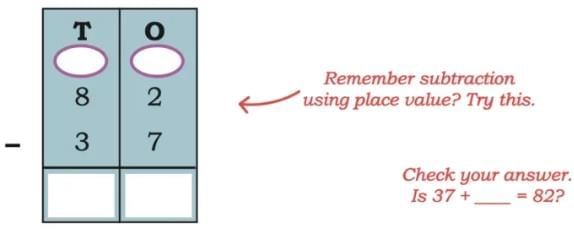 Ans:
Ans: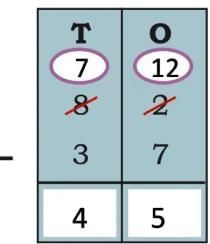
Check your answer. Is 37 + ____ = 82?
Ans: Yes, 37 + 45 = 82.
2. 57 – 11 = ______________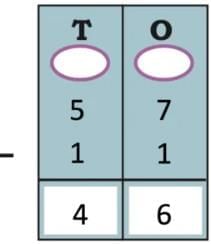 3. 23 – 19 = ______________
3. 23 – 19 = ______________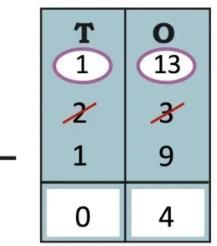
4. 49 – 21 = ______________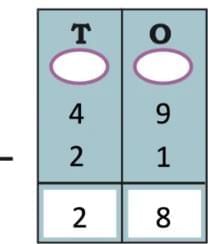
5. 56 – 18 = ______________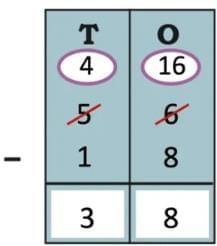
6. 93 – 35 = ______________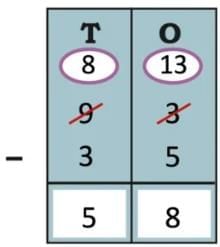
7. 84 – 23 = ______________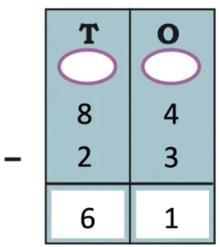
8. 70 – 43 = ______________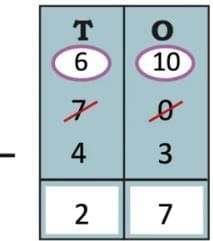
9. 65 – 47 = ______________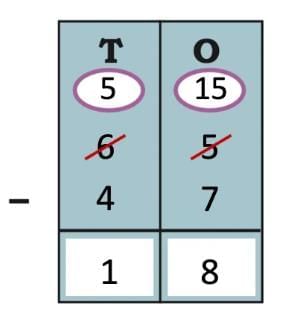
Sums of Consecutive Numbers
Numbers that follow one another in order without skipping any number are called consecutive numbers. Here are some examples —
 Q1. In each of the boxes above, state whether the sums are even or odd. Explain why this is happening.
Q1. In each of the boxes above, state whether the sums are even or odd. Explain why this is happening.
Ans: (i) Sum of 2 consecutive numbers: Always odd.
Reason: Each pair has one even and one odd number; even + odd = odd.
(ii) Sum of 3 consecutive numbers can be even-odd-even or odd-even-odd. Their sum alternate between even and odd depending on the starting number.
(iii) Sum of 4 consecutive numbers: Always even.
Reason: There are two evens and two odds. Even + even = even, odd + odd = even, and even + even = even.
Q2. What is the difference between the two successive sums in each box? Is it the same throughout?
Ans: (i) Sum of 2 consecutive numbers:
Differences:
5 – 3 = 2
7 – 5 = 2
9 – 7 = 2.
The difference is always 2.
(ii) Sum of 3 consecutive numbers:
Differences:
9 – 6 = 3
12 – 9 = 3
15 – 12 = 3
The difference is always 3.
(iii) Sum of 4 consecutive numbers:
Differences:
14 – 10 = 4
18 – 14 = 4
22 – 18 = 4
The difference is always 4.
So, the difference between successive sums is the same throughout each box.
Q3. What will be the difference between two successive sums for:
(a) 5 consecutive numbers
(b) 6 consecutive numbers
Ans:
(a) Sum of 5 consecutive numbers:
1 + 2 + 3 + 4 + 5 = 15
2 + 3 + 4 + 5 + 6 = 20
3 + 4 + 5 + 6 + 7 = 25
Difference: 20 – 15 = 5, 25 – 20 = 5.
The difference is 5.
(b) Sum of 6 consecutive numbers:
1 + 2 + 3 + 4 + 5 + 6 = 21
2 + 3 + 4 + 5 + 6 + 7 = 27
3 + 4 + 5 + 6 + 7 + 8 = 33
Difference: 27 – 21 = 6, 33 – 27 = 6.
The difference is 6.
Page 46
Let us see some more interesting patterns in sums.
Notice how the sums of 3, 4, and 5 consecutive numbers are related to the numbers being added.
Use your understanding to find the following sums without adding the numbers directly.
(a) 67 + 68 + 69
(b) 24 + 25 + 26+ 27
(c) 48 + 49 + 50 + 51 + 52
(d) 237 + 238 + 239 + 240 + 241 + 242
Sol: 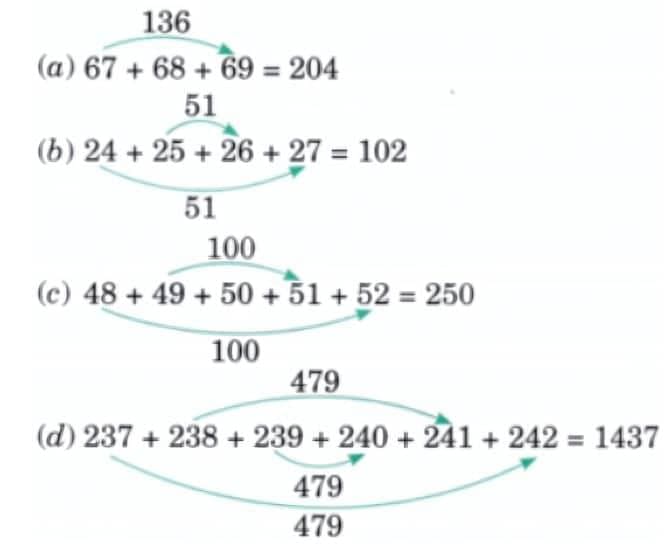
Page 48
Let Us Solve
Q1. Find the following sums. Try not to write TTh, Th, H, T, and O at the top. Just align the digits properly, at least for the smaller numbers
(a) 238 + 367
(b) 1,234 + 12,345
(c) 12 + 123
(d) 46,120 + 12,890
(e) 878 + 8,789
(f) 1,749 + 17,490
Ans:
(a) 238 + 367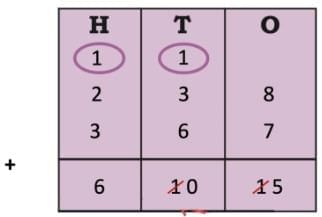 (b) 1,234 + 12,345
(b) 1,234 + 12,345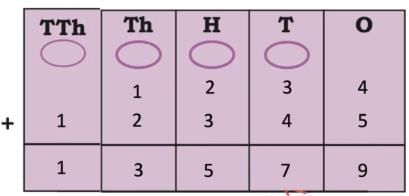 (c) 12 + 123
(c) 12 + 123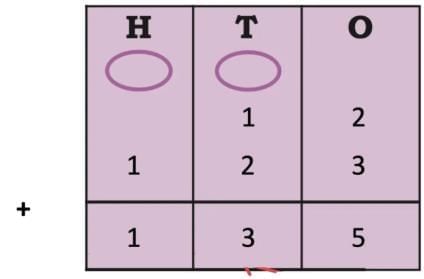
(d) 46,120 + 12,890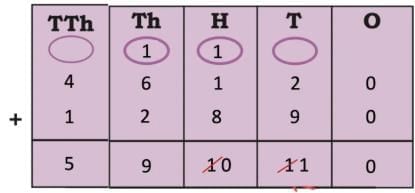
(e) 878 + 8,789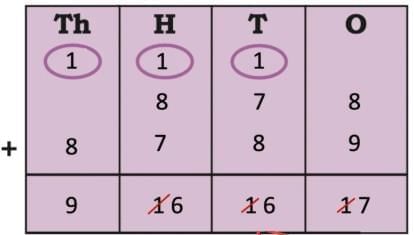 (f) 1,749 + 17,490
(f) 1,749 + 17,490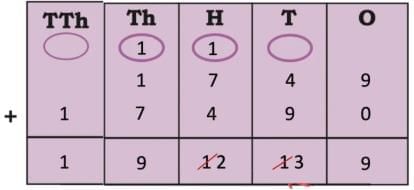
Q2. The great Indian road trip!
Nazrana and her friends planned a road trip across India, starting from Delhi. They first drove to Mumbai, then Goa, then Hyderabad, and finally Puri.
Look at the distances marked on the map and help them find the total distance travelled.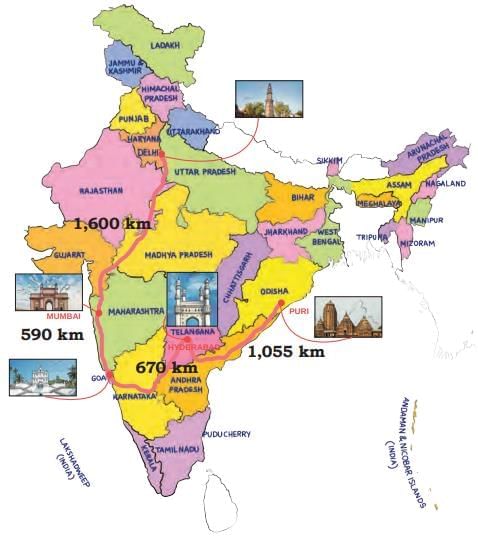 Ans: In the given map, the distances between the cities are as follows:
Ans: In the given map, the distances between the cities are as follows:
Delhi to Mumbai = 1600 km.
Mumbai to Goa = 590 km
Goa to Hyderabad = 670 km
Hyderabad to Puri = 1055 km
Total distance = 1600 + 590 + 670 + 1055 = 3915 km.
The total distance travelled by Nazrana and her friends is 3,915 km.
Q3. Find 2 numbers among 5,205, 6,220, 7,095, 8,455, and 4,840 whose sum is closest to the following.
(а) 10,000
Ans: 5,205 + 4,840 = 10,045
This sum is closest to 10,000 and all other possible combinations give sums that are much higher than 10,000.
(b) 15,000
Ans: 6,220 + 8,455 = 14,675
This sum is closest to 15,000 and all other possible and combinations give sums that are much higher or much lower than 15,000.
(c) 13,000
Ans: 8,455 + 4,840 = 13,295
This sum is closest to 13,000 and all other possible combinations give sums that are much higher or much lower than 13,000.
(d) 16,000
Ans: 7,095 + 8,455 = 15,550
This sum is closest to 16,000 and all other possible combinations give sums that are much lower than 16,000.
Pages 50-52
Q1. Subtract the following. Try not to write TTh, Th, H, T, and O at the top. Align the digits carefully.
(a) 4,578 – 2,222
Ans:
(b) 15,324- 11,780
Ans:
(c) 5,423 – 423
Ans:
(d) 123 – 12
Ans:
(e) 77,777 – 777
Ans:
(f) 826 – 752
Ans: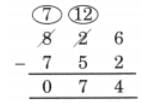
Q2. Mary’s train journey to Delhi.
Mary is on a train journey. She starts from Kolkata with ₹12,540.
She spends ₹3,275 on food and other expenses during her trip to Varanasi. In Varanasi, her uncle gives her a gift worth ₹4,900. She then travels to Delhi, spending ₹2,645 on the train ticket. She spends ₹1,275 on souvenirs in Delhi. How much money is Mary left with at the end of the Delhi trip?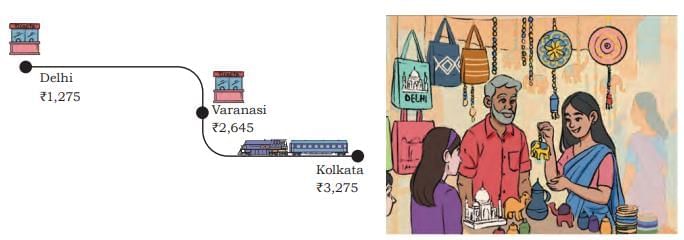 Ans: Mary starts her journey from Kolkata with ₹ 12,540.
Ans: Mary starts her journey from Kolkata with ₹ 12,540.
She spent ₹ 3,275 on food and other expenses to reach Varanasi.
In Varanasi, her uncle gave her ₹ 4,900 as a gift.
She then spent ₹ 2,645 on a train ticket to Delhi.
In Delhi, she bought souvenirs worth ₹ 1,275.
Total money she had after receiving gift = ₹ 12,540 + ₹ 4,900 = ₹ 17,440
Total expenses during the Journey
= ₹ 3,275 + ₹ 2,645 + ₹ 1,275 = ₹ 7,195
Money left with Mary
= ₹ 17,440 – ₹ 7,195 = ₹ 10,245
Thus, Mary had ₹ 10,245 left after completing her Delhi trip.
Q3. Members of a school council have raised ₹ 70,500. They plan to setup a Maths Lab with some games and models worth ₹ 39,785, buy library books worth ₹ 9,545, and purchase sports equipment worth ₹ 19,548.
(a) Estimate whether the school council has raised enough money to make the purchases. Share your thoughts in the class.
(b) Check your estimate with calculations.
Ans: (a) Estimated amount required for Math lab with some games and models (₹ 39,785) = ₹ 40,000.
Estimated amount required for library books (19,545) = ₹ 10,000
Estimated amount required for sports equipment (₹ 19,548) = ₹ 20,000
Total estimated amount
= ₹ 40,000 + ₹ 10,000 + ₹ 20,000 = ₹ 70,000
Amount raised = ₹ 70,500.
So, school council has enough money
(b) Now, calculating actual total cost:
₹ 39,785 + ₹ 9,545 + ₹ 19,548 = ₹ 68,878
Money raised by school council = ₹ 70,500.
Balance amount = ₹ 70,500 – ₹ 68,878 = ₹ 1,622.
Therefore, school council will be left with ₹ 1,622 after all the purchases.
Q4. A truck can carry 8,250 kg of goods. A factory loads 3,675 kg of cement and 2,850 kg of steel on it.
(a) What is the total weight loaded onto the truck?
(b) How much more weight can the truck carry before reaching its maximum capacity?
Ans: (a) Weight of cement = 3,675 kg
Weight of steel = 2,850 kg
Total weight of cement and steel
= 3,675 kg + 2,850 kg = 6,525 kg
So, total weight loaded onto the truck = 6,525 kg
(b) Maximum capacity of truck = 8,250 kg
Weight of cement and steel loaded on the truck = 6,525 kg
Remaining weight = 8,250 kg – 6,525 kg = 1,725 kg
So, the truck can carry 1,725 kg more before reaching its maximum capacity.
Quick Sums and Differences
Sukanta likes the numbers 10, 100, 1,000, and 10,000. He wants to figure out what number he should add to a given number such that the sum is 100 or 1,000. Help him fill in the blanks with an appropriate number.
59 + _____ = 100
Try this method for the number 59.
Ans: 
Now, use this method to solve the following.
877 + ________ = 1,000 and 666 + ________ = 1,000
4,103 + ________ = 10,000 and 5,555 + ________ = 10,000
Ans: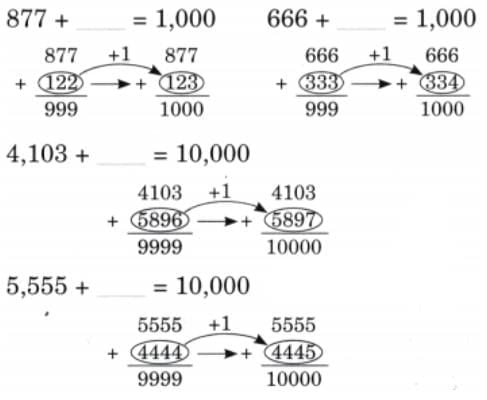
Will this method work if the units digit is 0? What do you think? What other methods can you use to find the missing number to fill in the blanks? Share your thoughts in the class.
(a) 180 + ________ = 1,000
Ans:
(b) 760 + ________ = 1,000
Ans:
(c) 400 + ________ = 1,000
Ans:
Namita likes the number 9. She wants to subtract 9 or 99 from any number. Find a way to quickly subtract 9 or 99 from any number.
(a) 67 – 9 = _____
Ans:
(b) 83 – 9 = _____
Ans:
(c) 144 – 9 = _____
Ans: 
(d) 187 – 99 = _____
Ans:
(e) 247 – 99 = _____
Ans:
(f) 763 – 99 = _____
Ans:
Rule: To subtract 9 or 99 from any number. Subtract 10 or 100 from the given number and add 1 in result.
Namita wonders if she can get 9 or 99 as the answer to any subtraction problem. Find a way to get the desired answer.
(a) 32 – _____ =9
(b) 66 – _____ =9
(c) 877 – _____ = 99
(d) 666 – _____ = 99
Ans: This is reverse subtraction
We are given the starting number and the difference and find the number that was subtracted.
We just do:
Starting number – difference = Missing number
(a) 32 – _____ = 9
_____ = 32 – 9
= 23
(b) 66 – _____ = 9
_____ = 66 – 9
= 47
(c) 877 – _____ = 99
_____ = 877 – 99
= 778
(d) 666 – _____ = 99
_____ = 666 – 99
= 567
|
40 videos|276 docs|7 tests
|
FAQs on We are the travellers - II NCERT Solutions - Mathematics (Maths Mela) Class 5 - New NCERT
| 1. What is the relationship between addition and subtraction in mathematics? |  |
| 2. How can we find the sum of consecutive numbers? |  |
| 3. What are some strategies for adding and subtracting large numbers? |  |
| 4. How do even and odd numbers affect addition and subtraction? |  |
| 5. What is the significance of quick sums and differences in everyday calculations? |  |
















